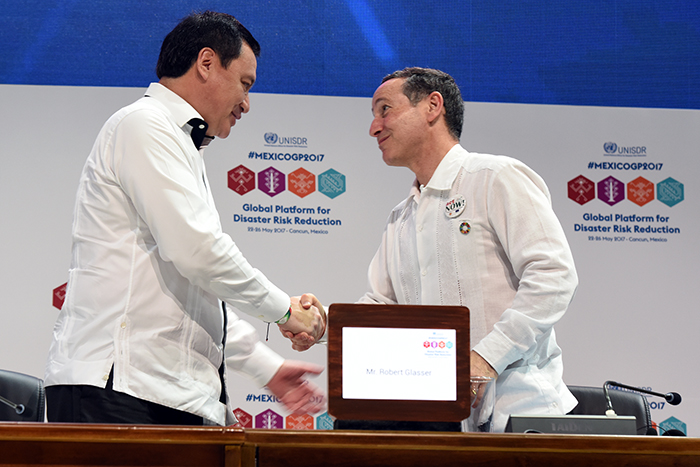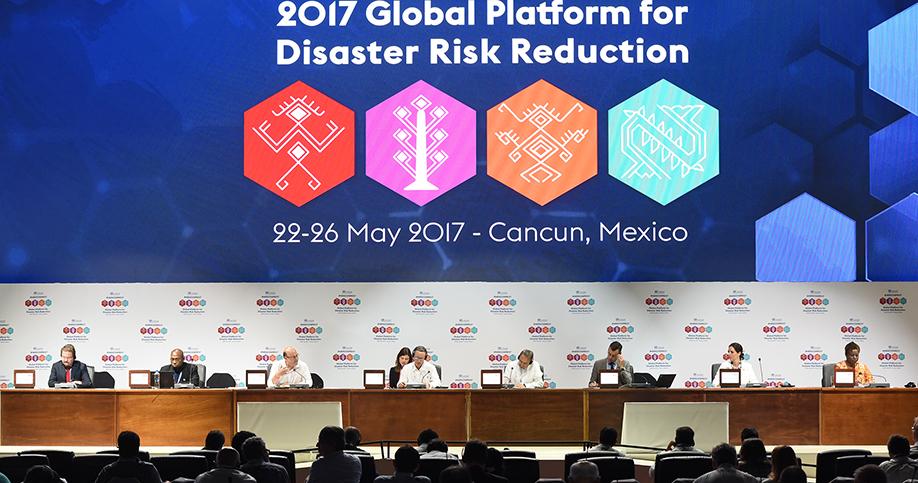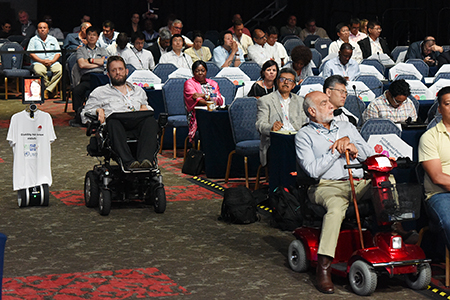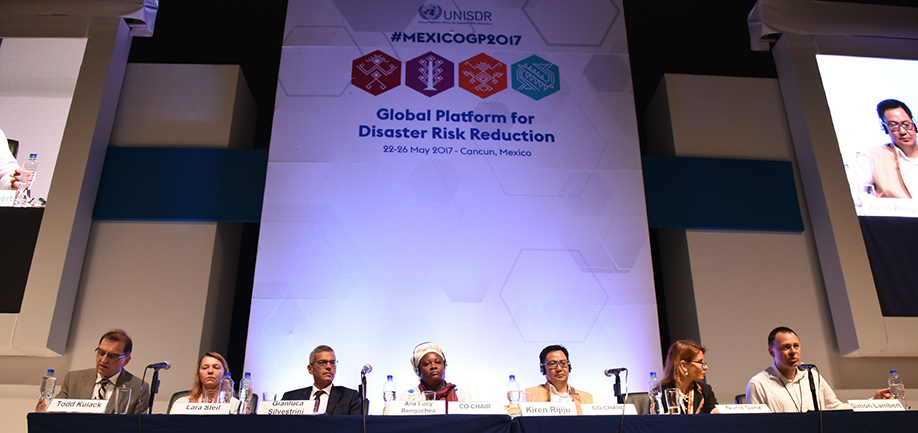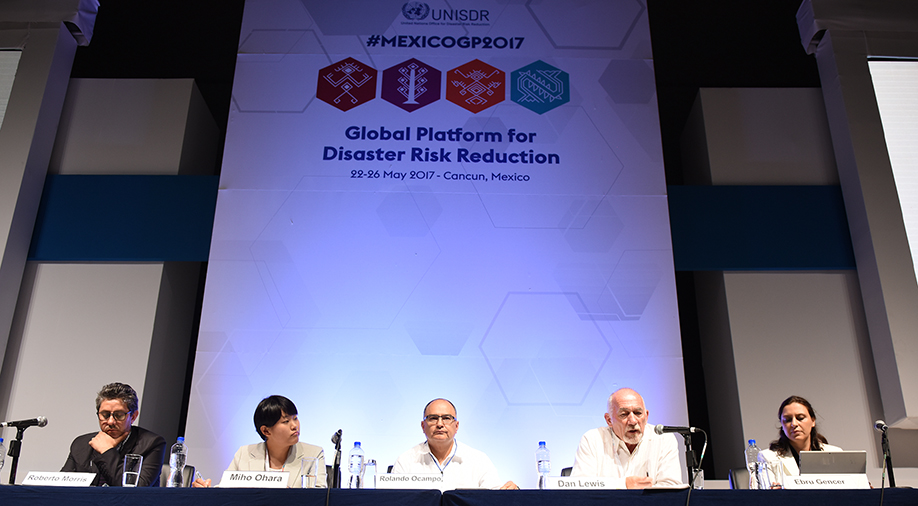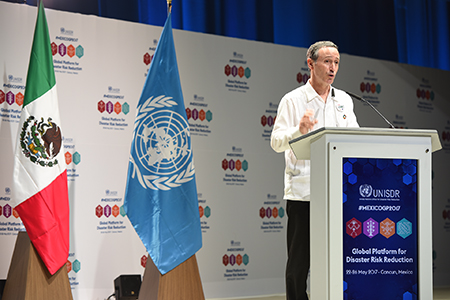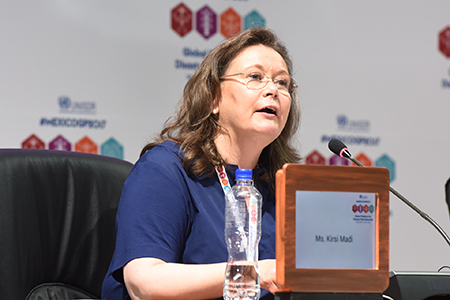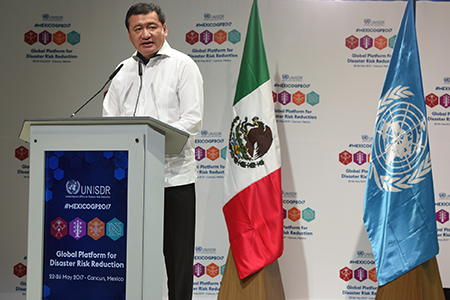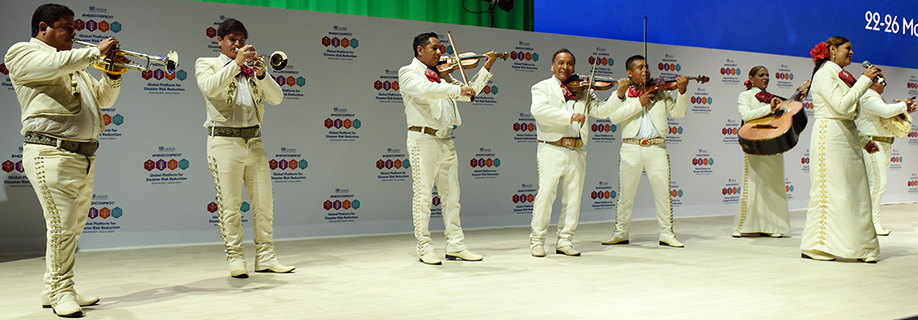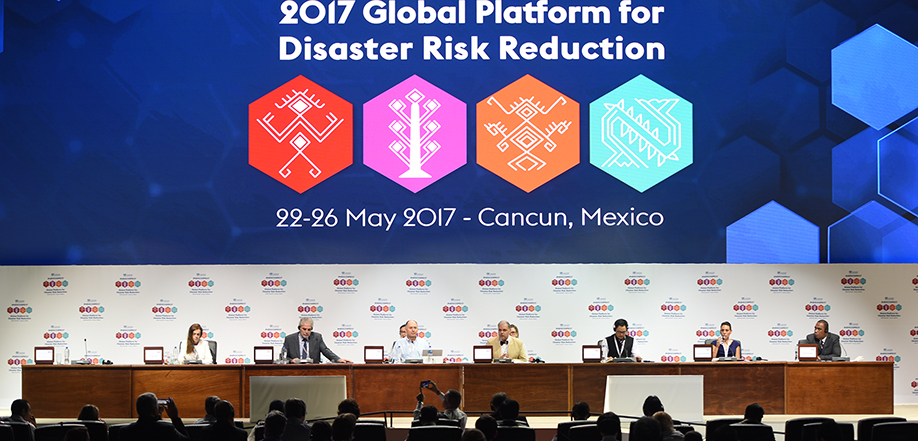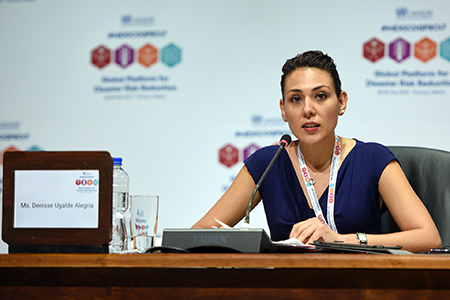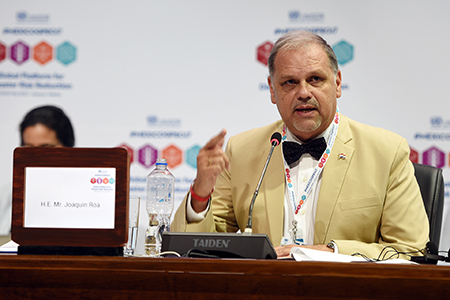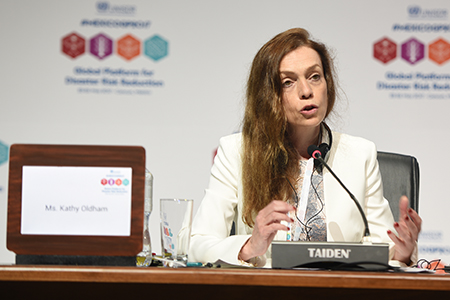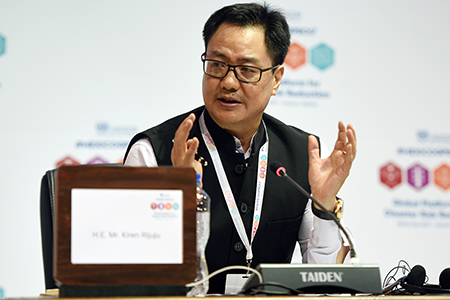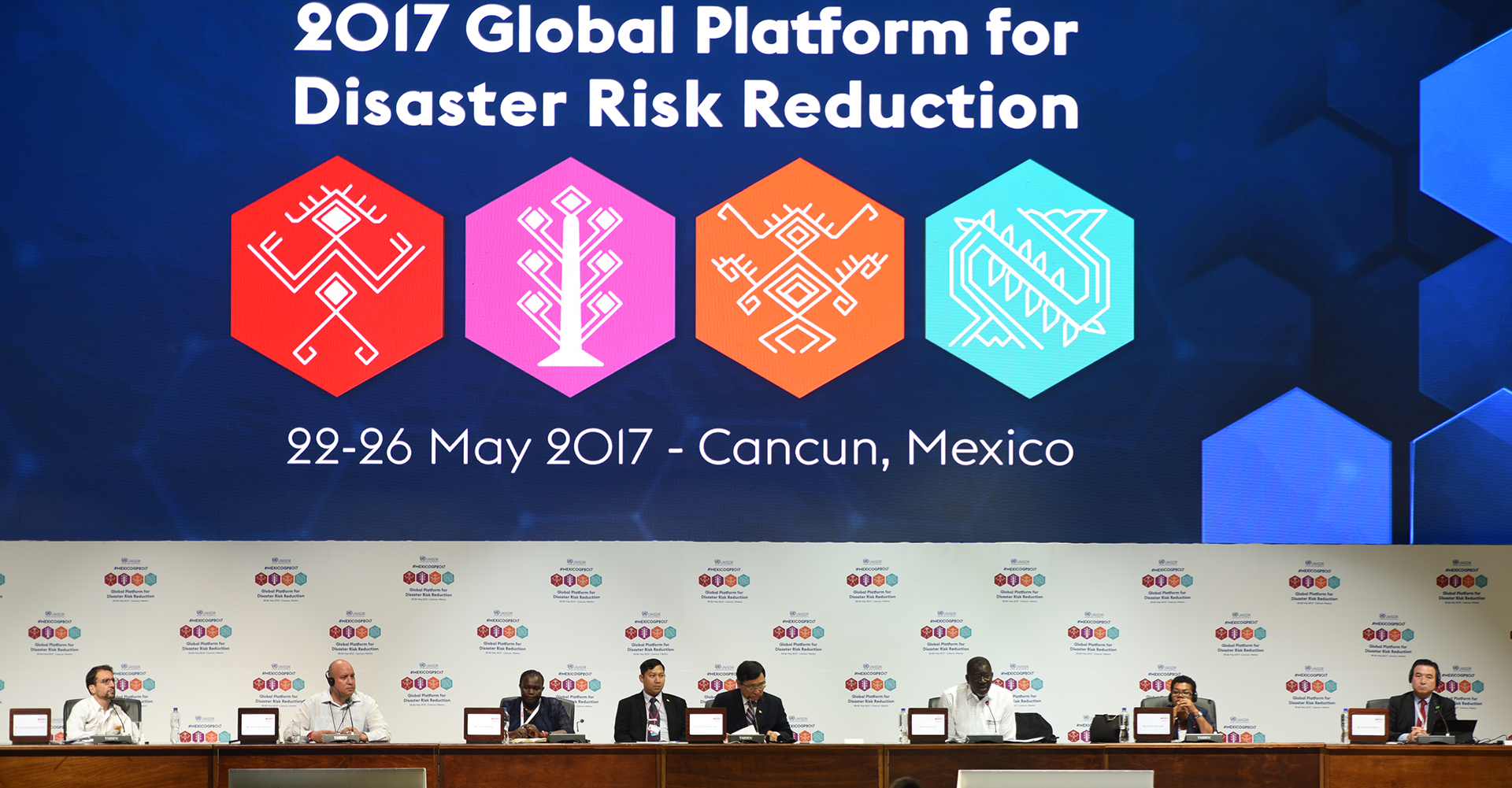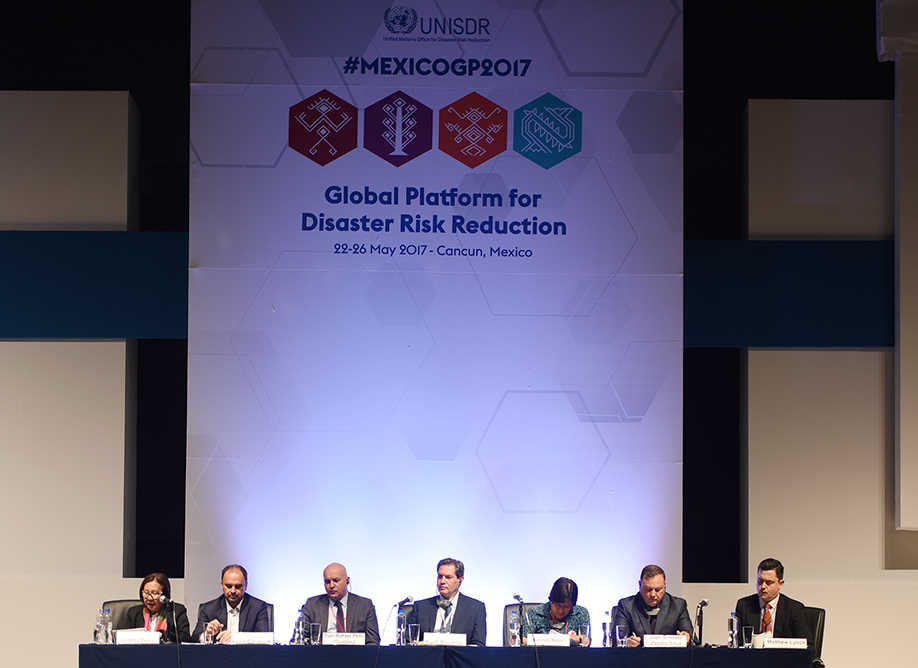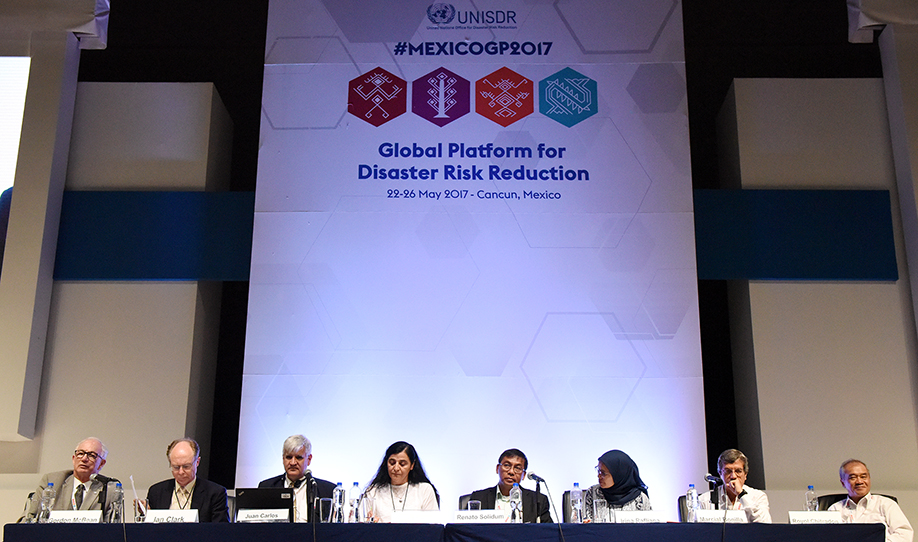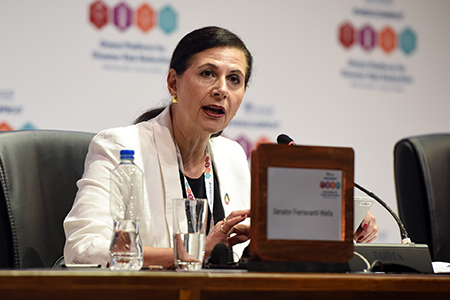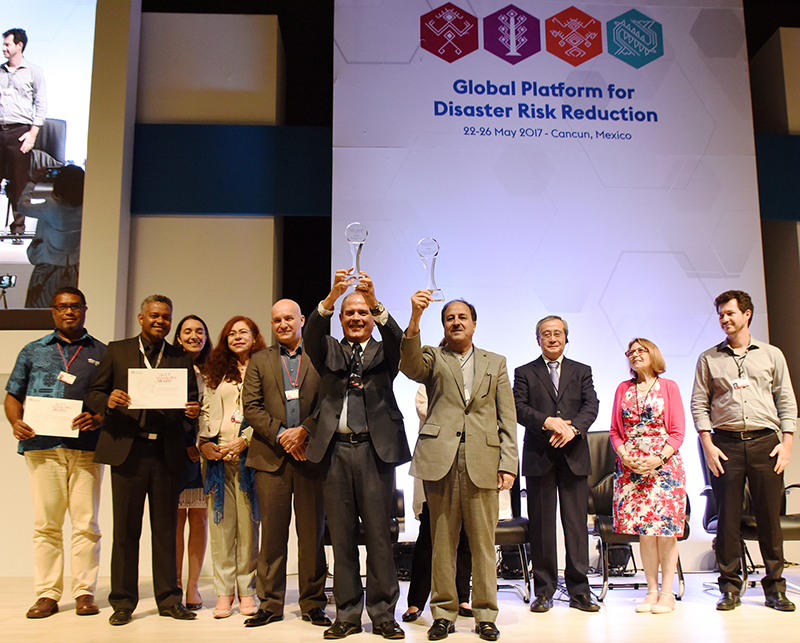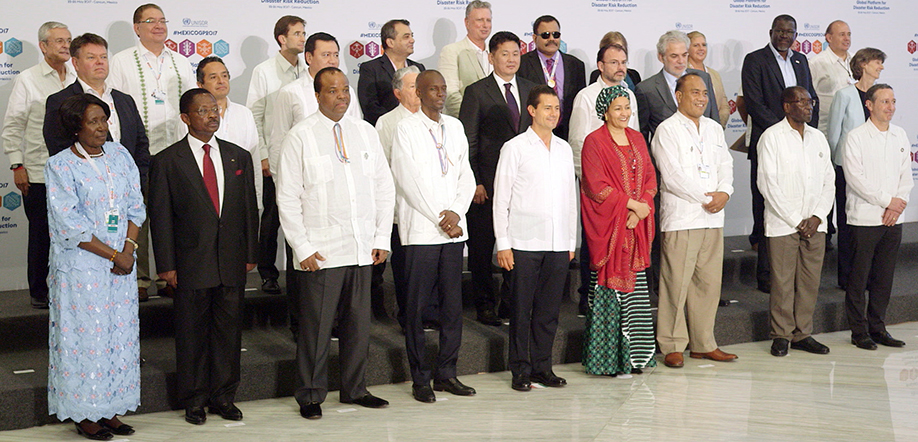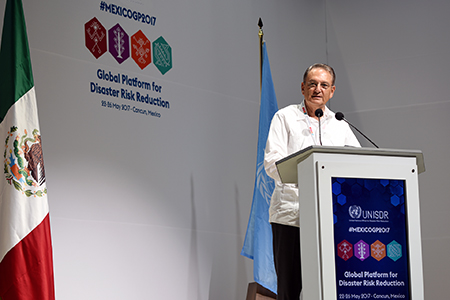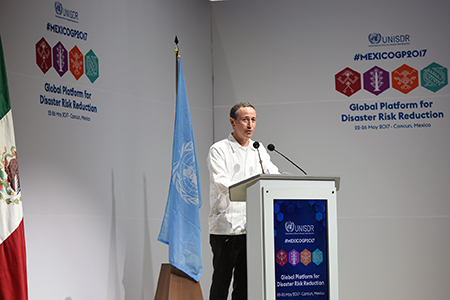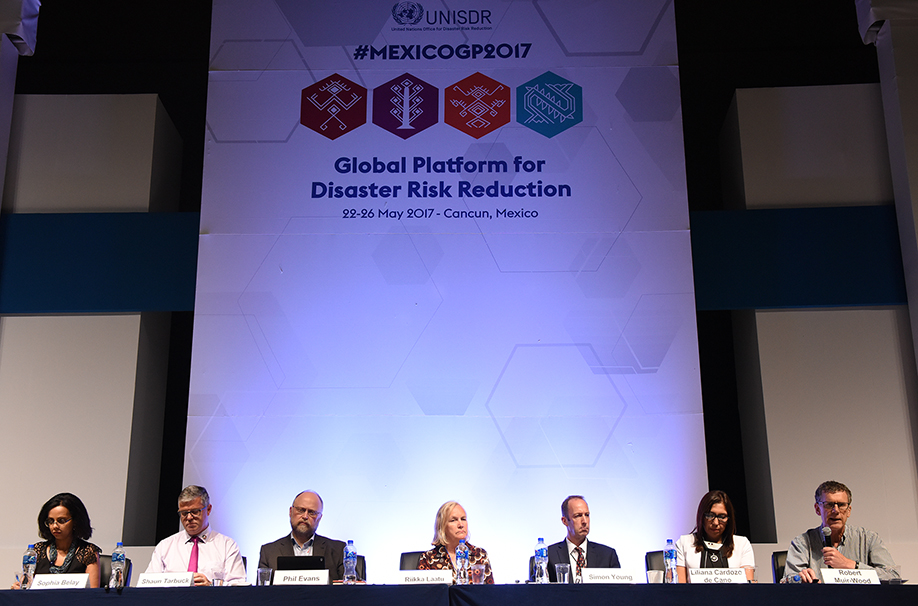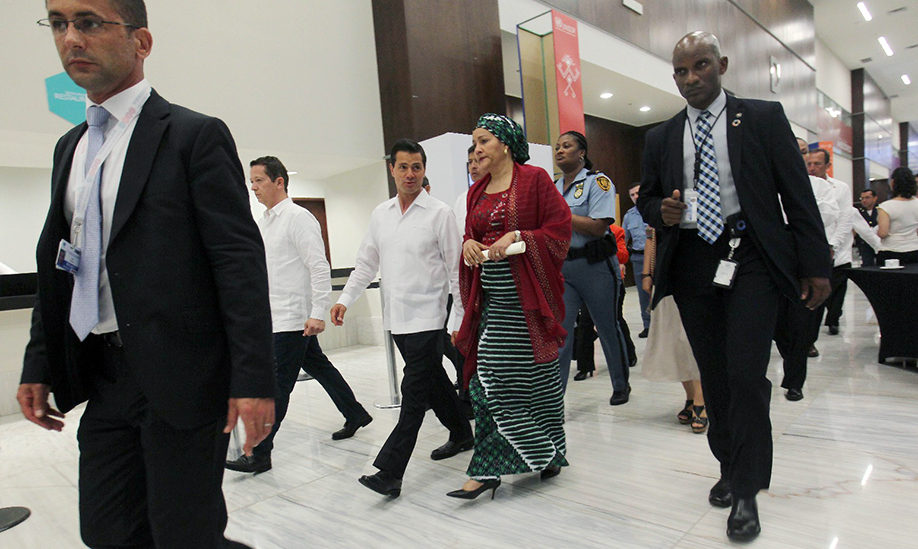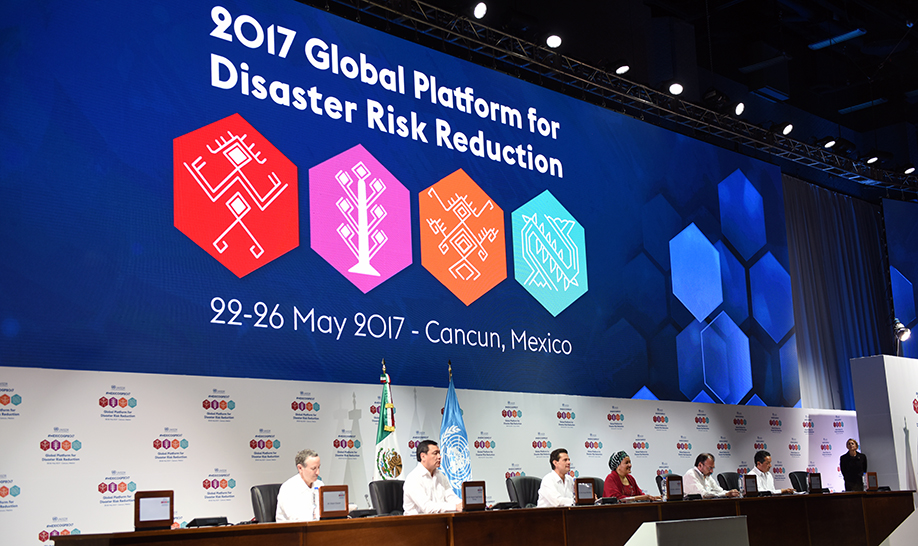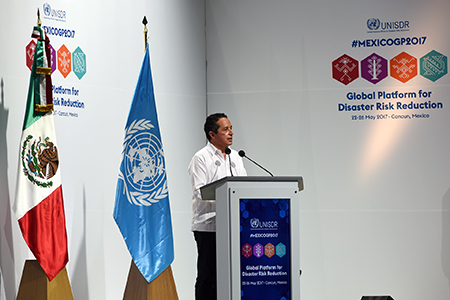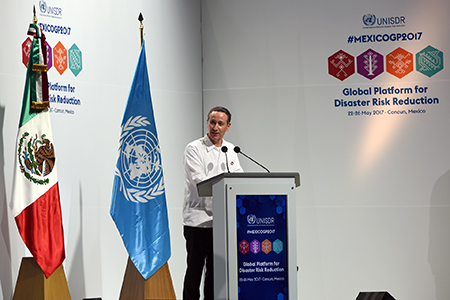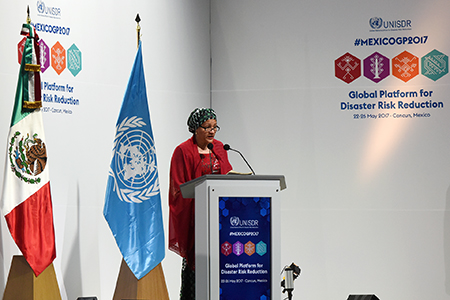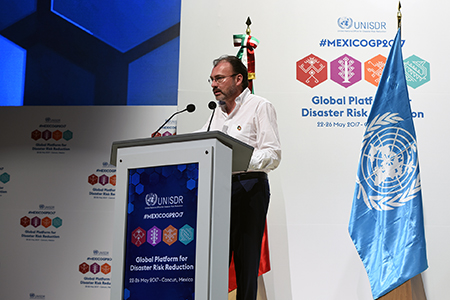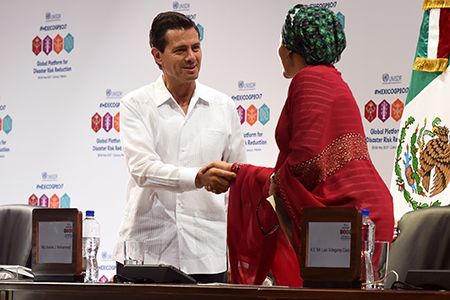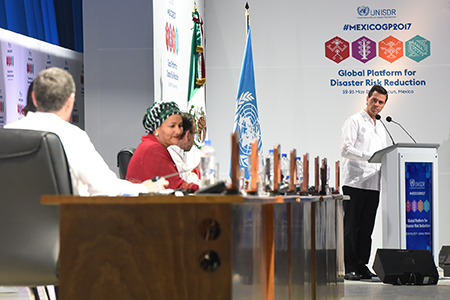2017 Global Platform for Disaster Risk Reduction - From Commitment to Action
24-26 May 2017 | Cancún, Mexico
Summary Highlights for the Meeting
Highlights for Friday, 26 May 2017
|
The Fifth Global Platform on Disaster Risk Reduction (DRR) met for its last day in Cancún, Mexico, on Friday, 26 May 2017. In the morning, delegates convened in a plenary session to consider the Sendai Framework monitoring. During the session, panelists highlighted issues related to incorporation of national statistics and geo-information into local level plans; the need for countries to include disaster displacement data while implementing the Sendai Framework for DRR 2015-2030; and the importance of integrating DRR principles in curricula to help communities create longer-term DRR and risk management plans. Shortly after the plenary, delegates broke into three parallel working sessions and discussed cultural heritage and indigenous knowledge; land use and spatial planning; and health and DRR. In the early afternoon, they reconvened in a plenary session to discuss coherence among the Paris Agreement on climate change, the 2030 Agenda for Sustainable Development, and the Sendai Framework. Patricia Espinosa, Executive Secretary, UN Framework Convention on Climate Change (UNFCCC), highlighted the enormous human and economic costs related to climate change induced disasters, and stressed that integrating climate action and DRR can transform current development realities. Other panelists shared national experiences in integrating policies to address development, climate change and disaster risk; called for a greater focus on humanitarian disasters; and drew attention to actions such as dredging rivers to enhance capacity for glacial melt and prevent flooding which illustrates addressing both climate change impacts and disaster reduction. Robert Glasser, Special Representative of the Secretary-General and Head of UNISDR, underlined the fundamental role of stakeholder inclusion, and called for coherence among national governments, local communities, the private sector, donor partners, and within the UN system. He underscored the importance of political will and strong leadership to ensure preparedness for multiple disasters at the national level. During the closing ceremony, Miguel Ángel Osorio Chong, Minister of Interior, Mexico, conveyed key actions from the Chairs’ Summary including creating and implementing strategic methodologies for information management on risks and threats; strengthening institutional coordination and collaboration, from the community level to multilateral agreements; and promoting an enabling environment for development of public private partnerships. Glasser encouraged delegates to consider DRR as a set of tools to overcome painful events, plan for the future, and step outside established silos. Kirsi Madi, Director, UNISDR, closed the meeting at 5:43 pm. |
||
|
IISD Reporting Services, through its ENB+ Meeting Coverage, provided daily reports in English and Spanish, daily web coverage, and daily Earth Negotiations Videos (ENV) from the 2017 Global Platform for Disaster Risk Reduction. In addition, IISD Reporting Services published a summary report of the meeting in HTML and PDF. Photos by IISD/ENB | Diego Noguera + Visit the web coverage for Friday, 26 May 2017 | ||
|
|
|
|
|
|
|
|
|
|
|
Highlights for Thursday, 25 May 2017
|
The Fifth Global Platform on Disaster Risk Reduction (DRR) met for a second day in Cancún, Mexico on Thursday, 25 May 2017. In the morning, delegates convened in a plenary session to consider national and local DRR strategies. They heard from local and national level experts and practitioners, with many delegates calling: to prioritize the role of women in reducing disaster risk; to ensure a people-centered approach to the design of DRR strategies rather than an infrastructure-centered one; and for greater inclusivity in the creation of local and national DRR strategies. Shortly after the plenary, delegates broke into three parallel working sessions and discussed science and technology, local authorities and community resilience. In the afternoon, they met in a plenary session under the banner “Reducing Vulnerability of Countries in Special Situations,” with panelists calling for implementing the Sendai Framework whilst taking advantage of opportunities presented by the 2030 Agenda and the Paris Agreement. They also shared experiences from least developed and landlocked countries in recovery and reconstruction efforts; stressed the need for education and public awareness in Small Island Developing States to ensure better disaster preparedness; and highlighted the importance of national disaster risk frameworks to meet the goals set out in the Sendai Framework. Thereafter, delegates convened in three parallel working sessions on DRR governance, ecosystem protection, management and resilient agriculture, and inclusive and people-centered DRR. Side events were held over the lunch break. In the evening, delegates attended the Sasakawa Award Ceremony, after which they were treated to a reception hosted by the state of Quintana Roo. |
||
|
+ Visit the web coverage for Thursday, 25 May 2017 | ||
|
|
|
|
|
|
|
|
|
|
|
|
|
|
Hightlights for Wednesday, 24 May 2017
|
The Fifth Global Platform on Disaster Risk Reduction (DRR) opened in Cancún, Mexico, on Wednesday, 24 May 2017. This followed two preparatory days, during which delegates met in regional meetings and networking sessions. Meeting for the first time since the approval of the Sendai Framework for Disaster Risk Reduction 2015-2030 in Japan in 2015, delegates convened for a brief plenary session in the morning. They then broke out into special sessions and working sessions, which met in parallel throughout the morning. Two special sessions considered the availability of and access to multi-hazard early warning systems and disaster risk information, and enhancing disaster preparedness for effective response and to “build back better” in recovery, rehabilitation and reconstruction. During the four working sessions in the morning, delegates considered: critical infrastructure, international cooperation, risk insurance, and the Sendai Framework Monitor Prototype. In the afternoon, delegates attended an opening ceremony, attended by Mexico’s President Enrique Peña Nieto, who called for enhanced prevention and preparedness measures to address disaster risk. Also in attendance was Amina Mohammed, Deputy Secretary-General of the UN, who underscored that DRR and climate change resilience are integral to the achievement of the 2030 Sustainable Development Agenda. High-level delegates then convened in a closed-door Leaders Forum. Others convened in two parallel working sessions to consider risk information and disaster loss databases, and private sector engagement in DRR. Side events were also held over the lunch break and in the late afternoon. In the evening, participants attended a reception hosted by the Government of Mexico. |
||
|
+ Visit the web coverage for Wednesday, 24 May 2017 | ||
|
|
|
|
|
|
|
|
|
|
|
|
Mayan cultural performance at the opening ceremony of the 2017 Global Platform for Disaster Risk Reduction | ||
|
|
|
|
|
|
|
|
UN International Strategy for Disaster Reduction (UNISDR)



